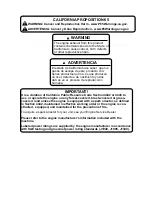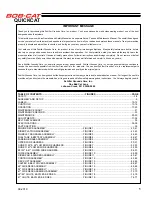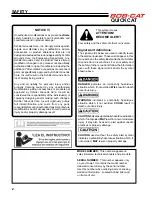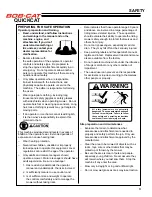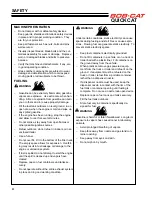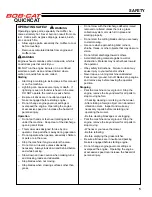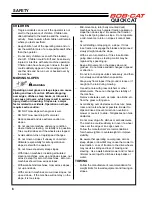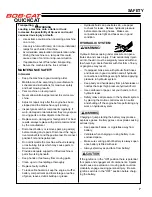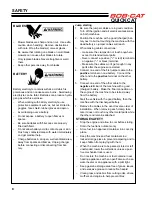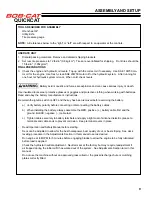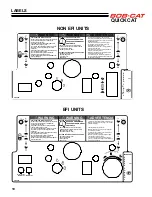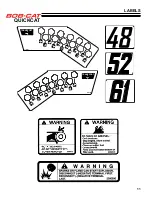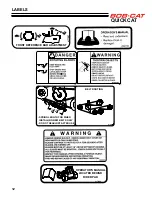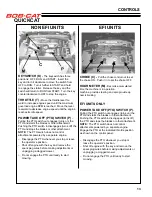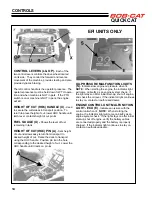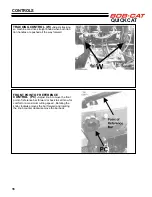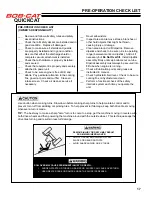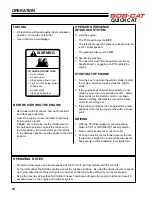
3
QUICKCAT
SAFETY
PREPARING FOR SAFE OPERATION
Operator preparation and training
– Read, understand, and follow instructions
and warnings in the manual and on the
machine, engine, and
attachments. If you don't
understand something or
itis unclear; contact your
dealer representative for
clarification.
– Become familiar with
the safe operation of the equipment, operator
controls and safety signs. Be prepared to
stop the engine and attachments quickly in an
emergency. Do not operate or allow another
person to operate this machine if there are any
questions about safety.
– Only allow operators who are responsible,
trained, familiar with the instructions, and
physically capable to operate or service the
machine. The owNer is responsible for training
the users.
– Wear appropriate clothing, including long
trousers and safety goggles or safety glasses
with side shields when operating mower. Do not
operate barefoot or wearing open sandals. Long
hair, loose clothing or jewelry may get tangled in
moving parts.
– If an operator or mechanic cannot read English,
it is the owner's responsibility to explain this
material to them.
This machine produced sound levels in excess of
85dBA at the operator's ear. Extended periods of
exposure can cause hearing loss.
– Wear hearing protection.
– Never allow children, unskilled or improperly
trained people to operate this equipment. Local
regulations can restrict the age of the operator.
– Only adults and mature teenagers should
operate a mower. Mature teenagers should have
adult supervision. Be sure a teenager:
1. Has read and understands the operator
manual and understands the risks involved.
2. Is sufficiently mature to use caution; and
3. Is of sufficient size and weight to operate
the controls comfortably and to manage the
mower without taking risks.
All rotary lawnmowers are potentially
dangerous. They can amputate hands and
feet and throw objects. Failure to follow
these safety and operating instructions
could result in serious injury or death.
WARNING
Site preparation and circumstances
– Evaluate the terrain to determine what
accessories and attachments are needed to
properly and safely perform the job. Only use
accessories and attachments approved by the
manufacturer.
– Clear the area to be mowed of objects such as
rocks, toys, wire or other debris that may be
picked up or thrown by the mower.
– Be sure the area is clear of pets and people,
especially young children. Never assume they
will remain where you last saw them. Stop the
machine if any enter the area.
– Mow only in daylight or in good artificial light.
– Do not mow wet grass as tires may lose traction.
– Data indicates that those operators age 60 years
and above are involved in a large percentage of
riding mower-related injuries. Those operators
should evaluate their ability to operate the riding
mower safely enough to protect themselves and
others from injury.
– Do not carry passengers, especially small chil-
dren. They may fall off and be seriously injured.
– Keep warning labels and this operator's manual
legible and intact. Replacement labels and manu-
als are available from the factory.
– Do not operate machine while under the influence
of drugs or alcohol or any other condition of
impairment.
– The owner/user can prevent and is responsible
for accidents or injuries occurring to themselves,
other people or property.


